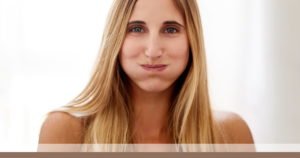Part 2 TMD
This installment we will give some insight into treatment modalities, especially neuromuscular orientation.
Symptoms
There are many varied symptoms associated with TMD. Below is partial list and if you exhibit one or more we might be able to help you resolve the symptoms.
Headaches / Migraines
Facial pain
Neck and shoulder pain
Tinnitus (Ringing in the ears)
Unexplained loose teeth
Sensitive and sore teeth
Jaw pain
Limited jaw movement or locking jaw
Numbness in the fingers and arms
Worn or cracked teeth
Clicking or popping in the jaw joints
Depression
How Can TMJ Be Treated
Neuromuscular dentists first measure the most relaxed position of your jaw to determine the goal for normal jaw positioning. Then the dentist works to realign the bite and restore the teeth and thus the jaw and joints to their optimal position. Once the bite is realigned and the jaw is in place, pain that resulted from the imbalance disappears.
Neuromuscular dentists use state-of-the-art technology to determine if your symptoms are caused by malocclusion and if so, what your optimal jaw position is. The dentist uses computerized jaw tracking instruments to record jaw movement, resting position, and path of closure. Electromyography is used to measure your jaw’s muscle function in both its stressed and relaxed positions, and will also measure the jaw-to-skull relationship to see if there is a structural imbalance. Sonography is used to record jaw joint sounds to detect any abnormalities. Additionally, x-rays of the jaw may be taken to help evaluate the condition and positioning of the joint.
TMJ / TMD Treatment
Once your neuromuscular dentist has diagnosed you with TMJ, he or she can determine the best course of treatment for your specific needs. Typically treatment will follow three steps:
Relieve muscle spasm and pain.
The immediate concern for neuromuscular dentists is to provide relief of your symptoms. The best way to do this is by using a technology called ULF-TENS. ULF-TENS stands for Ultra Low Frequency Transcutaneous Electrical Neural Stimulation, but don’t let this term intimidate you. Basically, ULF-TENS is a way to relax muscles with a gentle massage of the muscles. The rhythmic pulsing relaxes the muscles by increasing blood flow and pumping out waste products. ULF-TENS also helps with pain relief by stimulating the body’s production of endorphins, the body’s natural anesthetic.
Stabilize the bite.
Often for this step a temporary device, known as an orthotic is worn over the teeth. The orthotic allows your neuromuscular dentist to make easy adjustments to the plastic without adjusting the teeth until the bite is stabilized. Once symptoms are relieved and the bite has been stabilized, your dentist will move on to the next step and permanently adjust your bite to the correct position.
Long-term management.
There are a variety of ways to correct your bite in a more permanent way. Four of the most common of these approaches are outlined below:
Coronoplasty/Equilibration
Coronoplasty is smoothing and reshaping the enamel of the teeth to correct your bite. It is a simple procedure that does not require anesthesia and can be used when the bite is only slightly misaligned.
Removable Overlay Partials
These are permanent orthotics that usually fit over the back teeth and are designed to maintain an aligned bite.
Reconstruction
This approach involves making the teeth higher by using crowns. This permanently realigns the bite and provides structural support for the jaw.
Orthodontics (Braces)
When the teeth are healthy they may be moved to the optimal position using braces.
If you are suffering from TMJ symptoms, know that you are not alone! Although the vast majority of North Americans suffer from TMJ, most do not relate their pain and/or symptoms to a “bad bite”. Many people with TMJ are not diagnosed as having TMJ and are not treated correctly as a result.



